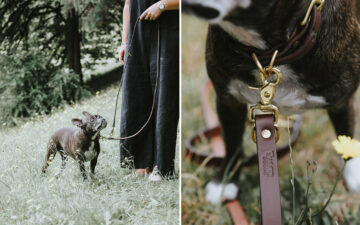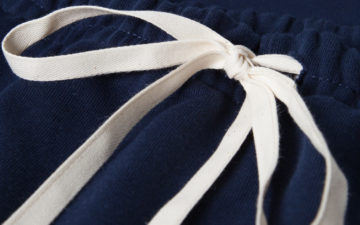Buying Your First Pair Of Raw Denim: The Beginners Guide
While many readers here are well past the point of their first raw denim purchase, we figure there are just as many who are fresh to the entire concept. If by chance you fall into this bucket, there are a few things you should take into account when you decide to take the plunge. Note, as well, that pinpointing the “perfect pair” is never an easy feat. There are so many attractive options on the market, not to mention brands offer a multitude of fits and fabrics.
Right off the bat, the easiest and best solution is to head to a brick-and-mortar store that offers a healthy range of raw denim and is run by knowledgeable staff. This should give you an excellent opportunity to try a lot of different pairs as well soak in advice given by someone who knows their trade.
The fact remains though that raw denim is still not always easy to obtain, and the internet is the only option many people are left with. Finding the goods on the web is not a problem at all, but many people struggle with the unknown and end up in a dilemma with a lot of unanswered questions.
To help you through some of the basic challenges you may encounter, we walk through the denim buying process in five simple steps:
- Choose your silhouette
- Know your measurements
- Sanforized or unsanforized
- Picking the right size
- Determine your budget & go shopping
But First, What is Raw Denim?
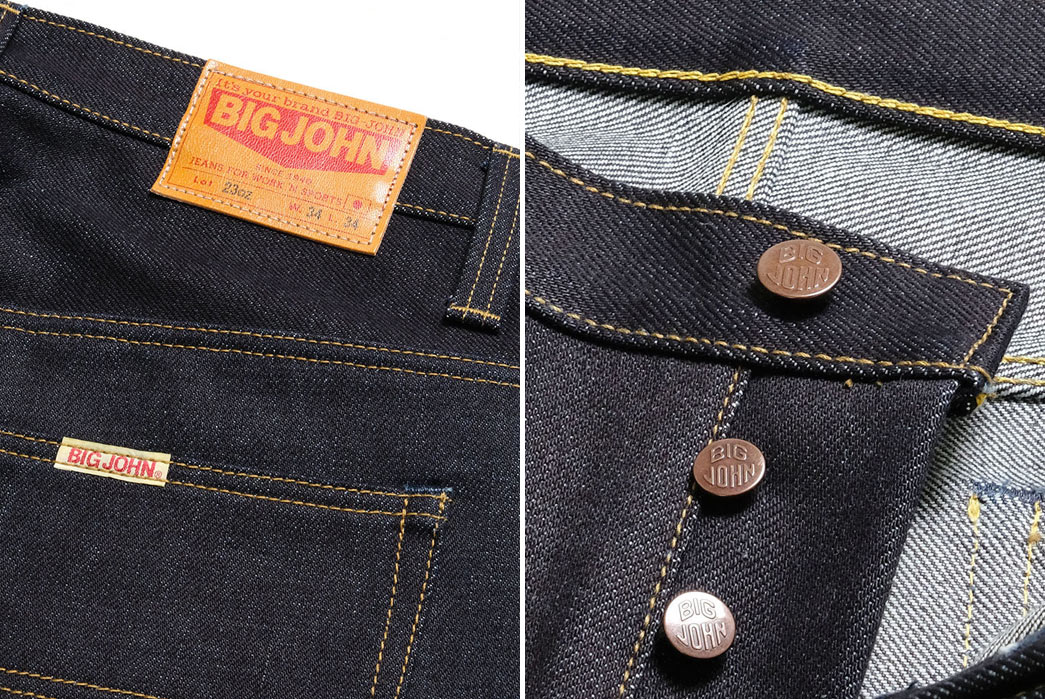
Close-ups of raw denim by Japanese label, Big John, via Hinoya.
To make denim, cotton yarns are dyed with indigo, cured, and then woven into a denim fabric on a loom. Raw denim is the name given to fabrics that are taken straight off the loom, not washed or processed. Raw denim can be identified through its stiff texture. Denim mills typically add a starch-like substance in a process known as ‘sizing’ which makes improves the strength, drape, and overall quality of the dye cotton yarns, as well as making them easier to weave into denim. As raw denim hasn’t been washed after this process, it remains stiff and starchy, requiring the wearer to ‘break it in’.
Breaking in raw denim jeans is part of the charm and allure of raw denim. Raw denim jeans mold to their wearer, forming a pattern of fades and creases that are unique to their wearer. For a full rundown on raw denim itself, check out The Essential Raw Denim Breakdown: Our 100th Article.
1. Choose Your Silhouette
Choosing the right silhouette for your first pair of raw denim jeans is essential. You need a fit that’s going to work with your body shape and style, leading to a pair that you’ll want to wear every day – exactly how raw denim should be worn.
Jeans fall into the following silhouette categories with the following typical traits:
- Straight leg – A class straight leg silhouette that isn’t baggy nor slim, just a simple straight silhouette with no heavy taper or flare. The lap and seat areas should be trim but skin-hugging, accentuating your figure without clinging to it. The hem opening at the bottom of the jeans will be in the mid-range, meaning you can wear the jeans over pretty much any footwear.
- Slim straight – Still straight, but narrower throughout the leg with a slightly slimmer thigh area. The hem opening at the bottom will also be narrower, which is something to be considered.
- Slim tapered – The slimmest form of jeans, also known as ‘tight tapered’. This category covers skinny raw denim jeans, too. They differ from the slim straight in that the knee down is heavily tapered, resulting in the lower portion of the jeans hugging the leg more. Slim tapered jeans will have the narrowest leg opening, so consider this if you want your hem to be worn over boots.
- Relax tapered – Like slim tapered but with a roomier top block for people with larger thighs/butt, or those who simply want more room and comfort in that area of the jean.
- Wide straight – Like the straight leg, wide straight jeans have no taper but also have a roomier top block for a wider silhouette throughout
- Bootcut – Slim straight but with a gentle flare towards the hem to accommodate the wearing of boots.
2. Know Your Measurements
After deciding what silhouette you want to purchase, you need to establish your measurements. One of the easiest ways to do this is to take one of your own pairs of denim or pants that have what you consider to be an ideal fit. From the images below you can see what measurements are required when buying a pair of raws by utilizing a simple tape measure. You can then use these measurements to follow the next steps in this guide and inform your purchase.
While you’ll still want to double-check the measurements with the retailer (particularly if you’re purchasing online), below is the common seven-point criterion to get you moving in the right direction.
Waist (Band)
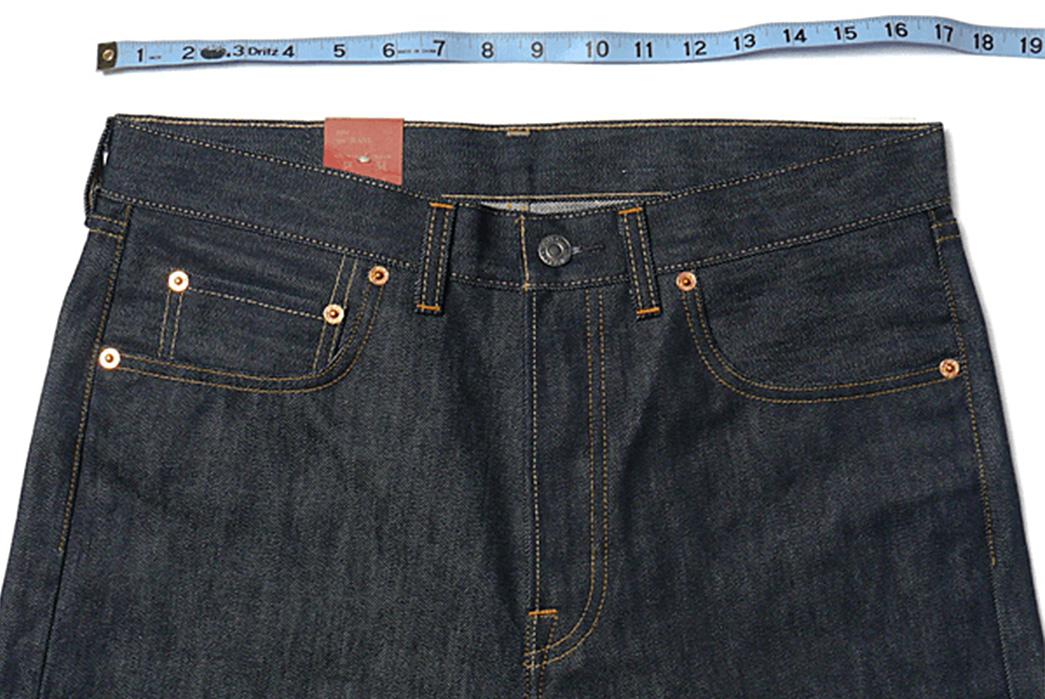
Based upon this pair of LVC 501, the denim measures approximately 16”, or 32″ total (note: tape not laid flat in image)
Lay your denim on a flat surface and pull the front waistband up so that it is on the same level as the rear waistband. Measure your waistband from left to right and multiply by 2 to find your waist size.
Inseam
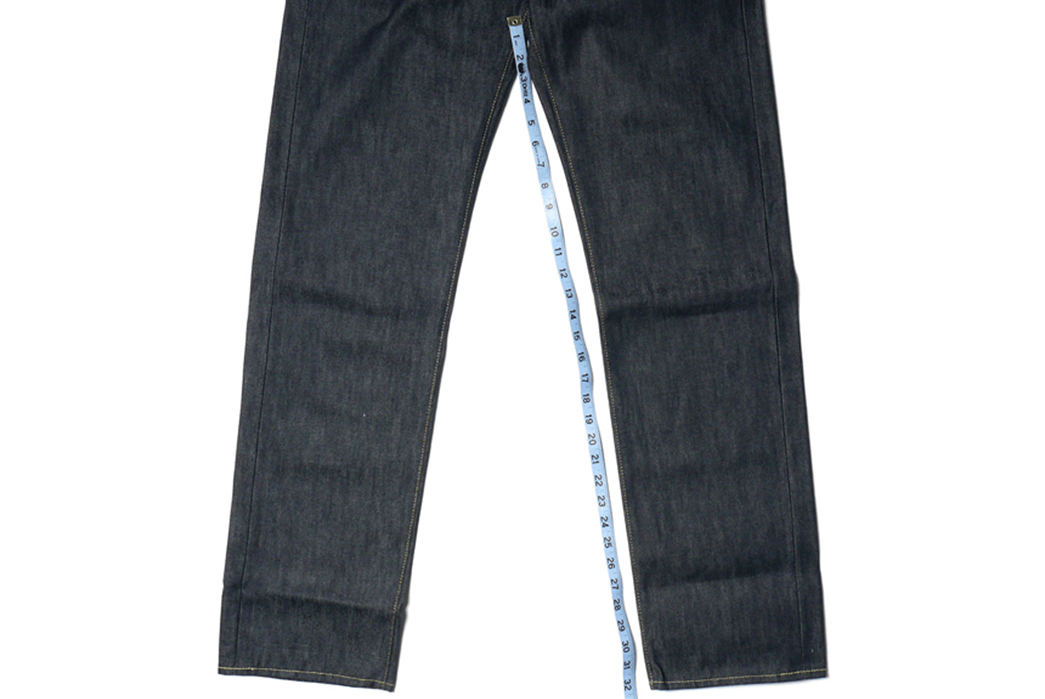
Inseam measurement in this case is 34’’ (note: tape above not measured exactly from crotch)
Start with your tape in the center of the crotch and measure alongside the inseam until you reach the hem.
Leg opening/hem
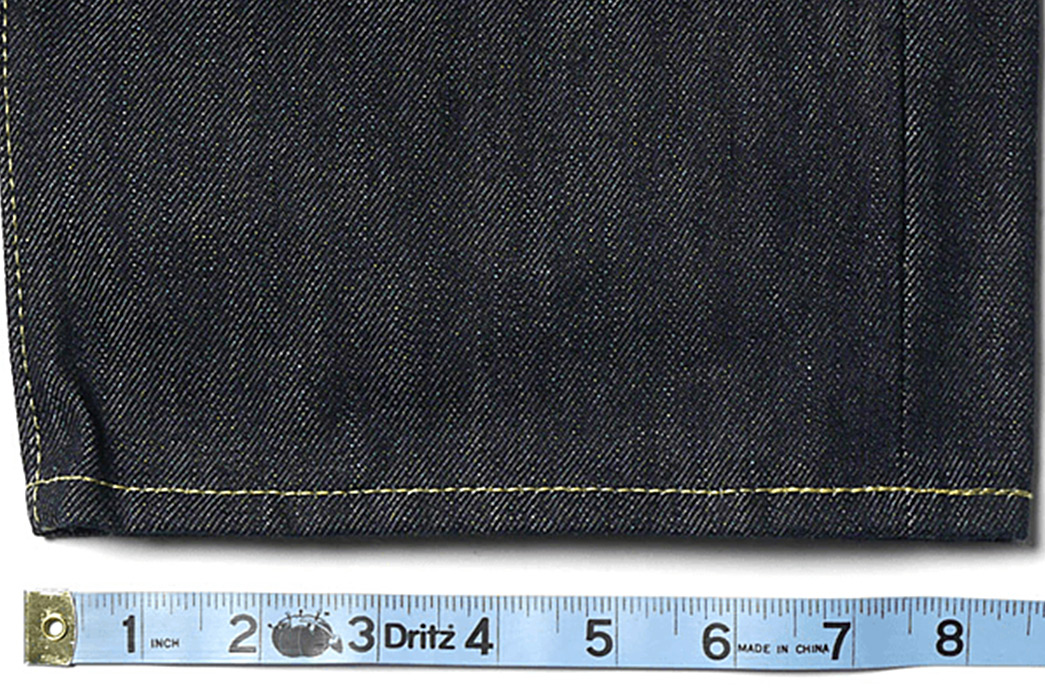
The leg opening measurement of this pair is 8.5’’
To measure the leg opening, place the front and the back of the hem in line so that they are on the same level. Now measure the width of the hem.
Upper Thigh
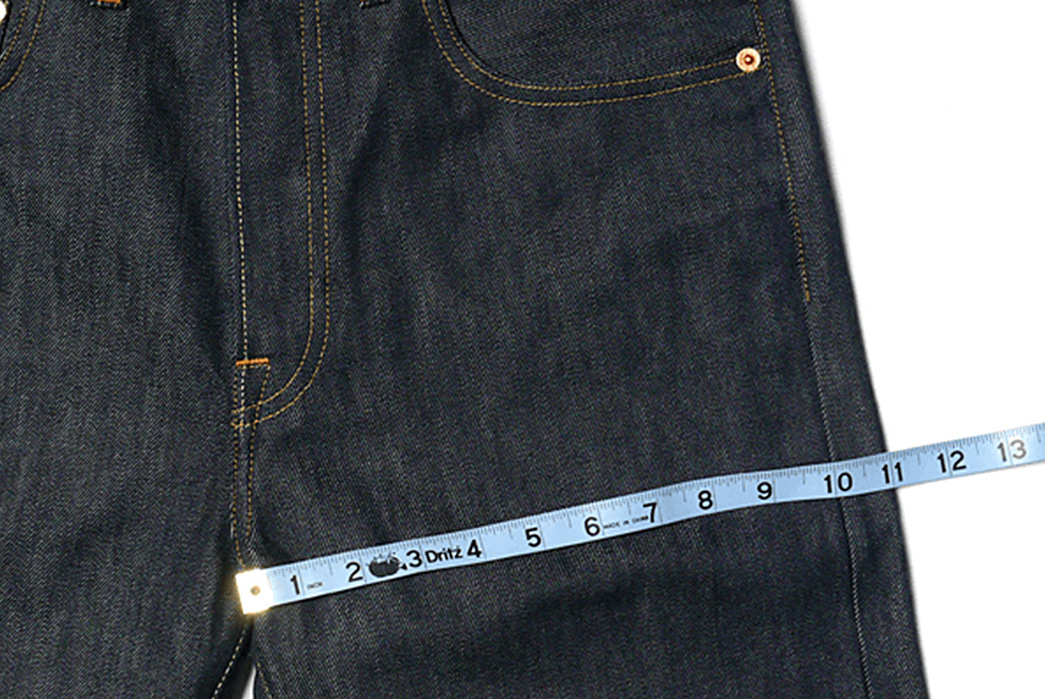
The upper thigh here measures 12’’
Measure horizontally from the crotch to the outside of the leg as shown in the image above.
Knee
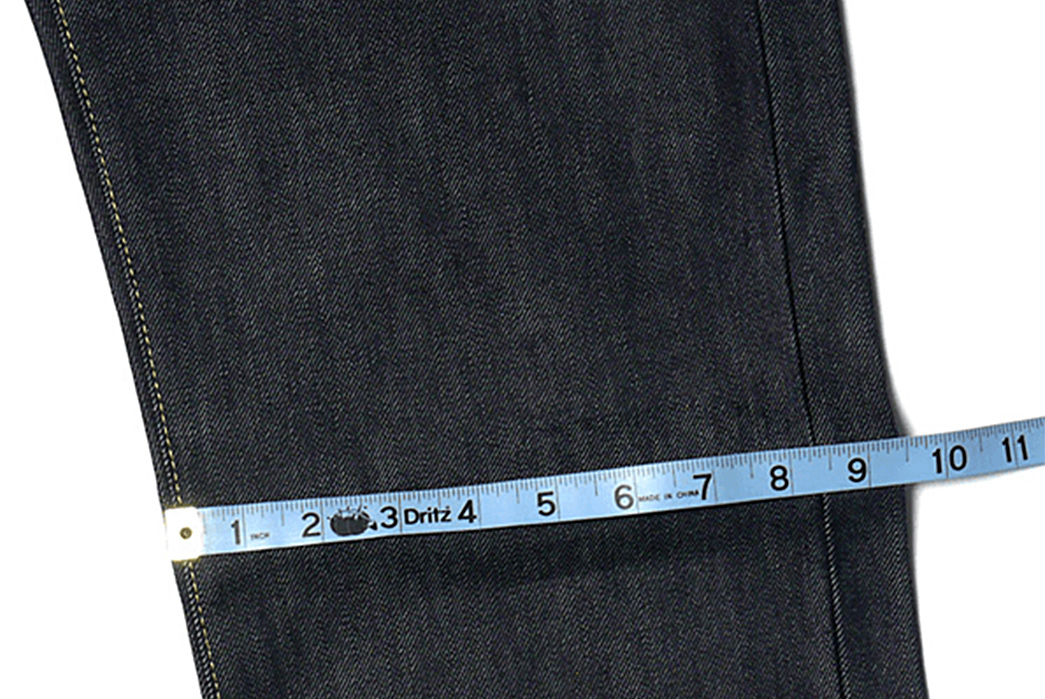
The knee of this pair measures 9.5″
Start with your measuring tape in the center of the crotch and measure 13” downwards, along the inseam.
From this point turn your tape horizontally and measure the width of the leg. This will give you your knee measurement.
Front rise
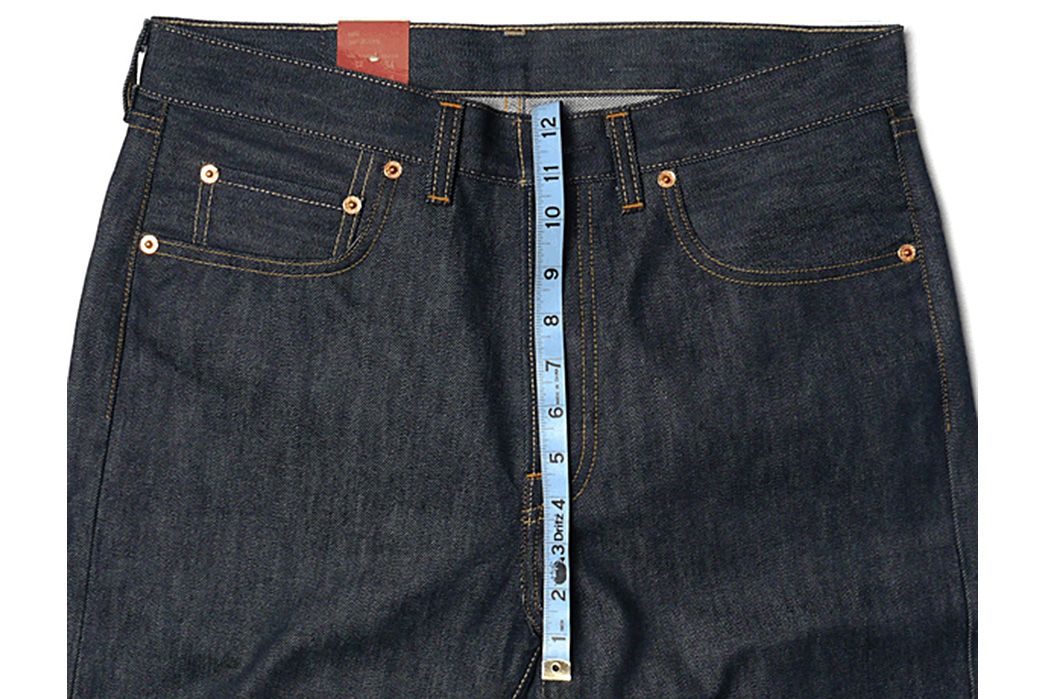
The measurement here is 12’’
Measure vertically from the crotch to the top of the waistband with your denim facing up.
Back Rise
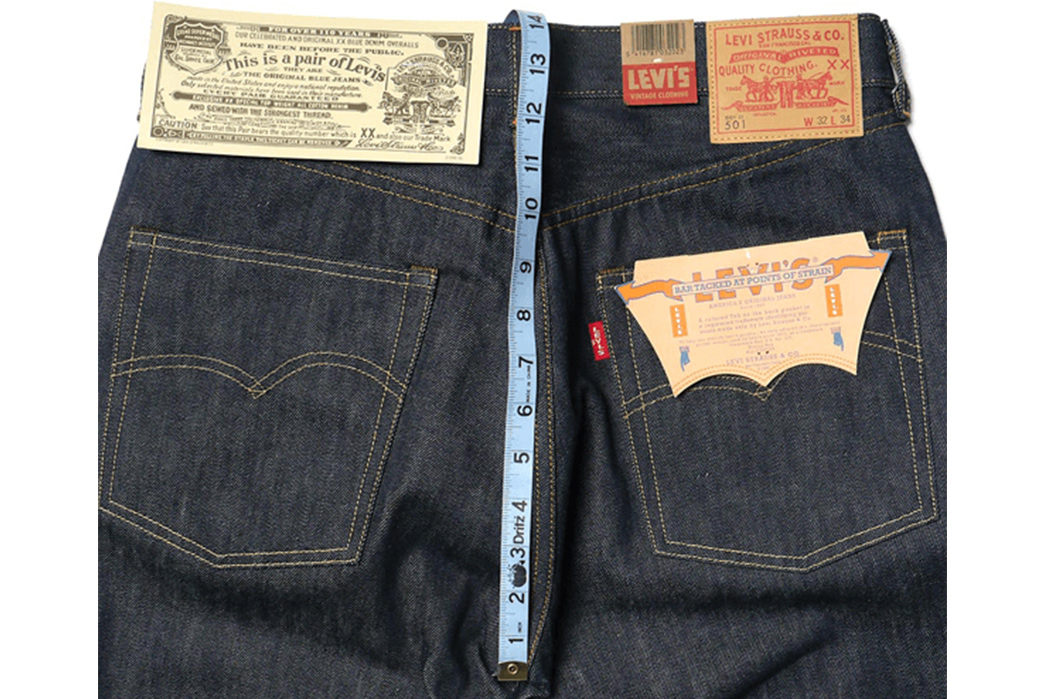
The back rise on this pair is 14″
Measure vertically from the crotch to the top of the waistband with your denim facing down.
3. Sanforized or Unsanforized
Before you move forward on any one specific denim, you’ll want to know whether the denim is sanforized or unsanforized as both options call for different sizing methods. We previously published an article on sanforization which makes for a useful reference in fully understanding the sanforization process. To re-cap though, the basics of (un)sanforization follow below.
Sanforized
Most raw denim is sanforized, meaning that they’ve been treated with water once to avoid any shrinking that may have occured during your first wash. When buying a sanforized pair, although they how will stretch roughly 0.5″ – 1.0″ with wear, bear in mind that they will shrink roughly 1% – 5% and you will need to size down accordingly.
Unsanforized
While more uncommon, numerous vintage brands still utilize unsanforized denim. Implied within the name, this is raw denim that has not undergone the sanforization process and thus will shrink a fair amount when they are washed or soaked for the first time. Most pairs will shrink about 7% – 10% which could be 1.5 to 3 inches in total, if not more. Due to this immense shrinkage, one often sizes up so that the denim won’t be too tight or short after the initial soak.
4. Picking The Right Size
At this point, you’re likely starting to really hone in on a few makes and models of raw denim jeans. Before jumping ahead though, you’ll want to combine steps 2 and 3 above in order to determine the optimal size you need. This is sometimes as easy as referencing a sizing table on the site (note this is not always 100% reliable) or emailing the store.
In general, though, it will boil down to three options:
True to Size (TTS)
Buying the size tag that has the closest measurements compared to yours.
Sizing Down
Buying one or more size tags smaller than what you currently measure. This is typically the case when buying a denim that stretches a lot and/or you know you’ll be wearing heavily. The caveat with tight-fitting denim is that they are more prone to blowouts, but if you’ve done your homework well enough (see step five), this will be an easy decision.
Sizing Up
Buying one size tag or more larger than the size that compares to your measurements. This could be the case with denim that is very sturdy/strong/tough and has little to no stretch, denim that is smaller and tighter in certain areas, and/or denim that is unsanforized or shrink-to-fit.
5. Determine Your Budget & Go Shopping
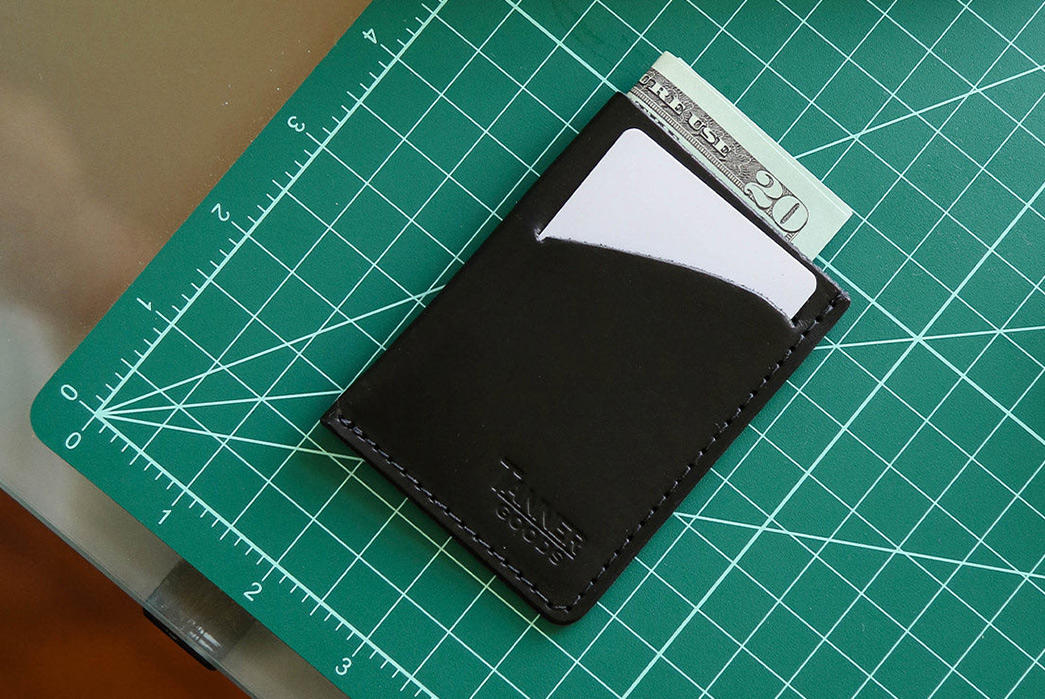
It goes without saying that most pairs of raw denim jeans are quality items, superior to their washed-out, mass-produced counterparts. Raw denim and selvedge denim typically go hand in hand, too, with raw selvedge denim arguably being the pinnacle of quality denim fabrics.
Raw denim is durable and can last you for years assuming it is maintained and treated well. The weight of the denim is an important aspect that determines the quality and durability of a pair. For this reason, the higher-weight denim (17 oz. and up) are traditionally more expensive. There is also a big difference between handcrafted jeans and those made in a mass-production factory. Some brands make their denim by hand and in small batches, a time-consuming process but one that can give the denim a story and more character.
The price for a decent pair of raw denim starts around $80.00 and can go up as high as $2,000.00 in the exorbitant case of the Momotaro handwoven G001-T Gold. Think about what you are willing to pay for a pair of raw denim and try to stay in your price range. For a few examples, see our lists of raw denim under 100 dollars, between 100 and 200 dollars, and between 200 and 350 dollars. Our article, The Three Tiers of Raw Denim can also help you decipher the differences between raw denim pricing.
This last step is completely personal and depends on your taste and style. What color denim do you like? Do you like visible rear pocket arcuates or would you like them to be clean and simple? Consider step 1 in this guide to create your shortlist.
Nearly every brand has a few different styles and fits. Pick a few that suit you best and attain as much information as you need to make the decision comfortable.
In essence, although buying your first pair of raw denim can sometimes be a daunting process, it doesn’t necessarily need to be. We believe following this succinct five-step guide is a great approach to getting the job done right the first time, but if you have another process, let us know through the comments below.
FAQs
Q: I can’t find any raw denim jeans with my inseam measurement, what’s going on there?
A: Raw denim jeans are often made with longer inseams of 35″ and up, thus will need to be hemmed by a tailor or cuffed to your desired length. This is a nod to old-school traditions of raw denim where folks had to shrink jeans to fit them. Longer inseams allowed for shrinkage and made the jeans universal.
We recommend hemming any raw denim jeans even if it’s just taking off 2-3″. Leave a sufficient amount of fabric if you want to cuff them, but cuffing over 3-4 times can look sloppy.
Bear in mind that not many tailors have a chain stitch machine, so if you want to retain the chain stitched quality of your hem, ask the retailer if they offer this service or send your jeans to Franklin & Poe.
Q: I bought some unsanforized jeans that need to be pre-soaked before I wear them. What do I do?
A: We have an article on soaking, here, but all you need to do is soak them in a tub of warm water for 1-2 hours before patting them dry with a large towel and hang-drying them in a warm environment.
Q: Whilst looking at raw denim jeans online, I see the term ‘one wash’ in some product descriptions. What does this mean?
A: One-wash is the name given to a gentle washing process that denim makers will use on a finished raw denim garment to remove the shrink and soften the fabric slightly. This process means you can wear your product right out of the box, as opposed to pre-soaking it yourself. So, if a pair of jeans are unsanforized but one wash, you can wear them straight away without soaking them, as the one wash process ave covered this for you.
For more on this subject, check out One Wash Denim – Is It Still Raw?
Q: Can raw denim jeans be black or other colors?
A: Yes. Raw denim is iconically indigo, but it can be any color.
Q: My lifestyle means my jeans will get dirty pretty quickly, but I’ve heard that you’re not meant to wash raw denim. Is this true?
A: Whilst it is common for people to refrain from washing their raw denim jeans, it isn’t a necessary practice. You can still earn decent fades with regular laundering. Try not to overthink this part of raw denim and remember that your jeans are supposed to reflect your lifestyle.
Japanese denim legend Yoshiyuki Hayashi is an advocate of the frequent wash, as discussed in our article, In Defense of the Frequent Wash.
Q: For personal reasons, I need some elasticity in my jeans. Are there any makers of raw denim with stretch?
A: Yes! There are a few makers of raw denim jeans with some stretch fibers woven into them. Hiroshi Kato makes raw selvedge denim jeans with 4-way stretch innovation. Purists will say that raw denim shouldn’t have stretch in it, but there’s no need to be so black-and-white about jeans.
Q: What does the ‘oz.’ refer to in listings of raw denim jeans? The weight of the jeans?
A: The ‘oz.’ metric is used to describe the weight of the raw denim fabric per square yard prior to being cut and sewn into jeans.
Q: I want some really thick, heavyweight jeans. What weight should I buy?
A: If you want a pair of raw denim jeans with some real heft, go for something above 16 oz.
